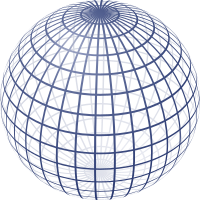
Photo from wikipedia
Background: Reconstruction of the orbital area remains a challenge in many cases. The recently introduced mirroring technology provides surgeons with patient-specific information for accurate orbital reconstruction; its premise is that… Click to show full abstract
Background: Reconstruction of the orbital area remains a challenge in many cases. The recently introduced mirroring technology provides surgeons with patient-specific information for accurate orbital reconstruction; its premise is that the three-dimensional anatomy of craniofacial bone is symmetric. The purpose of this study was to verify this premise of the mirroring technology by assessing three-dimensional asymmetry. Methods: Facial computed tomographic data of 104 patients were imported into iPlan software. Four reference points (i.e., zygomaticofrontal suture, frontomaxillary suture, infraorbital foramen, and optic canal) were set, and the three-dimensional distances from these points to the anterior nasal spine on the mirroring plane were calculated. In addition, the orbital cavity volume and the three-dimensional distances from point optic canal to the other reference points were calculated for the assessment of the orbit anatomy. Three plastic surgeons performed these processes independently. Results: No statistically significant difference was found in the three-dimensional distances between anterior nasal spine and the four reference points bilaterally. Also, no statistically significant difference in the three-dimensional distances between the point representing the optic canal and other reference points was detected bilaterally. Orbital cavity volume showed a mild asymmetry, but the discrepancy was acceptable for computer-aided design applications. For all reference points, the maximum value of the 95 percent CI was less than 1.4 mm. Conclusions: The three-dimensional location of the orbits and the three-dimensional anatomy of the orbit were symmetric. Thus, the mirroring technology could be a reliable first step in computer-aided design, computer-assisted surgery, and navigation-assisted surgery. CLINICAL QUESTION/LEVEL OF EVIDENCE: Therapeutic, V.
Journal Title: Plastic and Reconstructive Surgery
Year Published: 2022
Link to full text (if available)
Share on Social Media: Sign Up to like & get
recommendations!